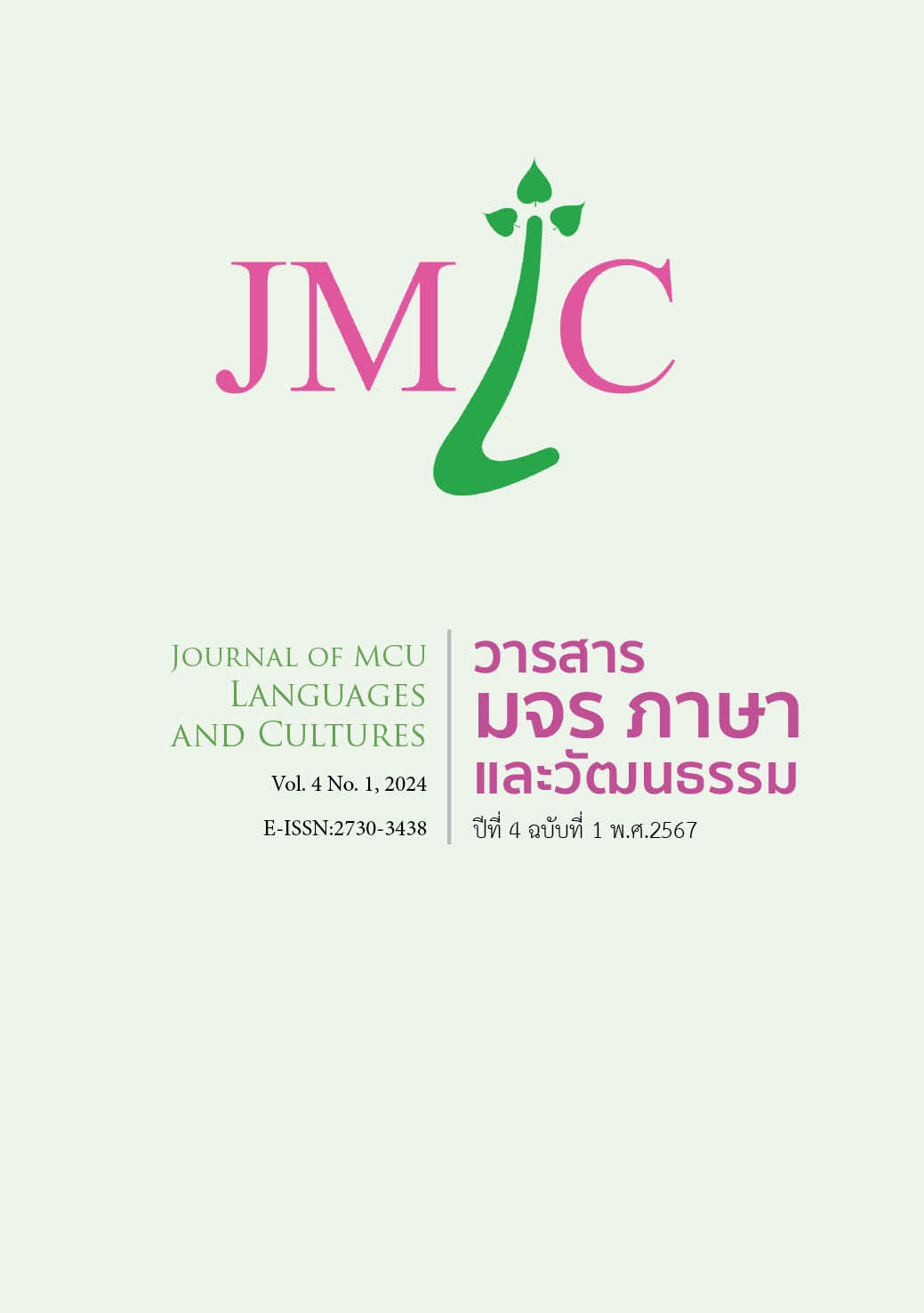ลักษณะการใช้ภาษาในมีม
คำสำคัญ:
มีม, อรรถศัพท์, การสร้างศัพท์ใหม่บทคัดย่อ
มีม คือรูปแบบการสื่อสารชนิดหนึ่งในโลกออนไลน์โดยมีต้นแบบจากพฤติกรรมของมนุษย์ที่สามารถแสดงทั้งวัจนภาษาและอวัจนภาษา การใช้มีมเพื่อสื่อสารในช่องทางอินเทอร์เน็ตกลายเป็นที่นิยมอย่างมากเนื่องด้วยรูปแบบที่น่าสนใจจากการนำรูปภาพมาประกอบกับข้อความแทนการสื่อสารโดยใช้ข้อความตัวอักษรเพียงอย่างเดียว ด้วยเหตุนี้มีมจึงกลายเป็นวัฒนธรรมของการสื่อสารในอินเทอร์เน็ต มีมเป็นที่นิยมใช้ในหลายภาษา ซึ่งแต่ละภาษาต่างก็มีลักษณะการใช้ภาษาที่แตกต่างกันออกไป ด้วยเหตุดังกล่าวจึงทำให้เกิดงานวิจัยชิ้นนี้ขึ้นเพื่อศึกษาลักษณะการใช้ภาษาของมีมภาษาไทย การศึกษาครั้งนี้ได้วิเคราะห์ข้อมูลจากมีมจำนวน 490 มีมที่แพร่หลายในปี พ.ศ. 2565 และได้พบว่าภาษาในมีมเกี่ยวข้องกับการสร้างคำศัพท์ใหม่ 5 กระบวนการ ได้แก่ การยืมคำ การตัดคำ การยกคำ การประสมคำ และการย่อคำ นอกจากนี้ ยังพบความสัมพันธ์ในเชิงอรรถศัพท์ 5 ประเภทที่ปรากฏจากการใช้คำในมีมได้แก่ การมีความหมายตรงกันข้าม การจัดกลุ่ม การพ้องรูป การเป็นส่วนประกอบ และการพ้องความหมายเอกสารอ้างอิง
สำนักราชบัณฑิตยสภา. (2560). พจนานุกรมศัพท์ภาษาศาสตร์ (ภาษาศาสตร์ทั่วไป) ฉบับราชบัณทิตยสภา. เอบิซ อินเตอร์กรุ๊ป จำกัด.
Blackmore, S., Dugatkin, L. A., Boyd, R., Richerson, P. J. & Plotkin, H. (2000). The power of memes. Scientific American, 283(4), 64-73.
Bruns, A. (2017). Blog. In: Turner, B. S. (ed.). The Wiley-Blackwell Encyclopedia of Social Theory (pp. 1-3). Hoboken: John Wiley & Sons, Ltd.
Cambridge Dictionary. (n.d.). https://dictionary.cambridge.org
Cruse, D. A. (1986). Lexical Semantics. New York: Cambridge University Press.
Davison, P. (2012). The language of internet memes. In: Mandiberg, M. (ed.). The Social Media Reader (pp. 120-134). New York: New York University Press.
Dawkins, R. (1976). The Selfish Gene. Oxford: Oxford University Press.
Eco, U. (1979). The Role of the Reader: Explorations in the Semiotics of Texts. Bloomington: Indiana University Press.
Grundlingh, L. (2017). Meme as speech acts. Social Semiotics, 28, 147-168.
McCulloch, G. (2019). Because Internet: Understanding the New Rules of Language. New York: Riverhead Books.
Oliveira, H. G., Costa, D. & Pinto, A. M. (2016). One does not simply produce funny memes! – Explorations on the automatic generation of internet humor. Proceedings of the Seventh International Conference on Computational Creativity, 238-245.
Punke, J. & Butler, E. (2019). Do me syntax: Doggo memes, language games and internal structure of English. Ampersand, 1-9.
Shifman, L. (2013). Memes in a digital world: reconciling with a conceptual troublemaker. Journal of Computer-Mediated Communication, 18, 362-377.
Yule, G. (2010). The Study of Language. (4th ed.). New York: Cambridge University Press.
ดาวน์โหลด
เผยแพร่แล้ว
รูปแบบการอ้างอิง
ฉบับ
ประเภทบทความ
สัญญาอนุญาต
ลิขสิทธิ์ (c) 2024 วารสาร มจร ภาษาและวัฒนธรรม

อนุญาตภายใต้เงื่อนไข Creative Commons Attribution-NonCommercial-NoDerivatives 4.0 International License.






